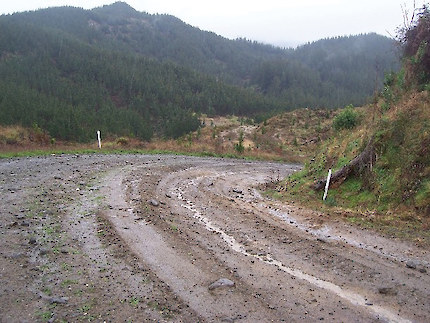Harvesting can be tough on infrastructure. R&M can be very expensive and challenging, especially on new and poorly constructed roads, in wet weather, and where there is a lot of traffic.

- Corrugations are normally created on steep road segments from uphill traffic
- Corrugations get worse if they are not fixed
- A short-term fix is to grade to the depth of the corrugation, re-shape, spread metal, water and roll to compact
- A long-term solution is to use a clay binder, lime stabiliser or tarsealing

- Check water control during and after harvest
- Loggers often damage water controls. These include culverts, drainage culvert mouths, sediment traps, berms and flumes

- Wet weather, the steep grade and poor road shape have led to surface rutting
- Fix by cutting, grading and compaction
- Fix in good weather and when the material is not too wet or dry
- Use a good aggregate

- Heavy traffic can cause severely rutted roads
- This pavement has failed. Water has gone through the metal and weakened the formation. Mud is where metal should be
- For fixing deep ruts refer back to the ‘Weak or failed subgrade needs fixing’ section.